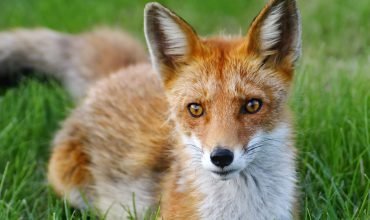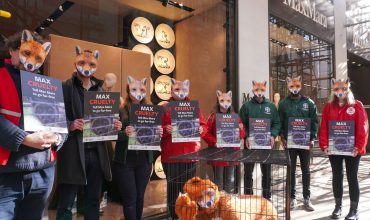New photos reveal poor biosecurity measures and horrible conditions on Finnish fur farms, where animals were being killed en masse over bird flu concerns. The uncontrolled spread of the virus among mink and foxes highlights the pandemic potential of fur farming and the urgent need for action at European level.
Scientists have raised alarms about an unusual mink mutation, recently found on five Finnish fur farms, which might be a sign of adaption to mammals. In July, the World Health Organisation (WHO) warned that the increase in cases of avian flu among mammals could make it easier for the virus to spread to humans.
The Finnish fur farm outbreaks are the second bird flu events in Europe in less than a year, following a Spanish outbreak last October. In an attempt to prevent further disease spread, the Finnish government has begun slaughtering 120 000 foxes and mink. However, new images documenting the cull, by Finnish animal protection NGO Oikeutta eläimille, expose a concerning lack of basic safety protocols by fur farm workers to avoid further virus transmissions.
Fur farm employees can be seen with masks resting on their chin while feeding animals and wearing open protective clothing without masks while working near the animal enclosures. The distressing photos also show dead and cannibalized animals left in small, desolate cages and other animals suffering in agony.
Not only are fur farms unbelievably cruel to animals, evidence shows that they can act as reservoirs for deadly viruses, as well as create new viruses, and should be permanently banned in Europe as soon as possible.
Kristo Muurimaa, campaign director at Oikeutta eläimille, said:
“Whenever we treat animals badly, we risk our own health as well. Keeping tens of thousands of wild animals in small, barren cages creates an environment, where viruses can spread and mutate. These photos also show that farm workers are not following the biosecurity protocols. We are basically risking a pandemic for an unnecessary luxury product.”

Despite serious concerns on public health and animal welfare, Finland continues to allow fur farming, lagging behind 19 European countries that have already banned this cruel practice – including Austria, the Netherlands and Estonia. In recent years, the uncontrollable spread of COVID-19 on mink farms led to an outright ban on fur farming in Italy and the downfall of the Danish fur industry, once Europe’s biggest mink fur producer.
Earlier this year the most successful European Citizens’ Initiative concerning animal welfare – #FurFreeEurope – was submitted to the European Commission, with over 1.5 million validated signatures calling for a fur ban. The threats to public health posed by fur farming form a key part of the case for a ‘Fur Free Europe’, alongside the inherent animal welfare failures.
As the Commission prepares to publish its plans for the revision of EU animal welfare legislation, and as the European Parliament starts to consider the Fur Free Europe ECI, pressure is mounting on decision makers at EU-level to back a European wide ban on fur farming.




